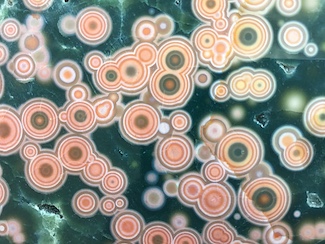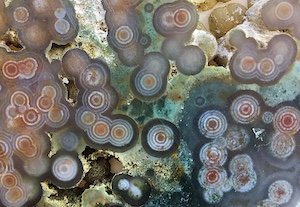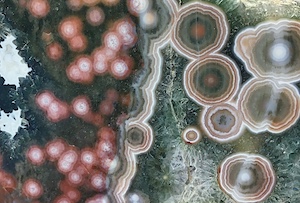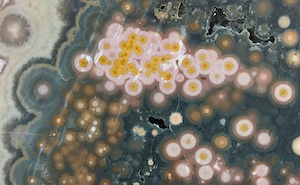Color in Ocean Jasper
(Scroll down for text)
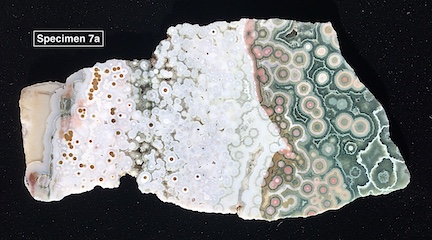
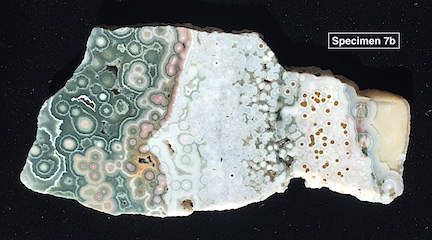
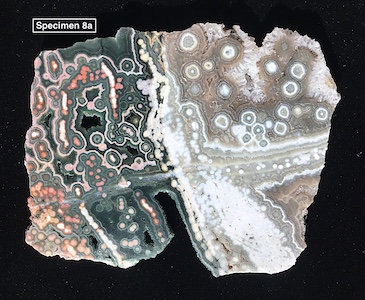
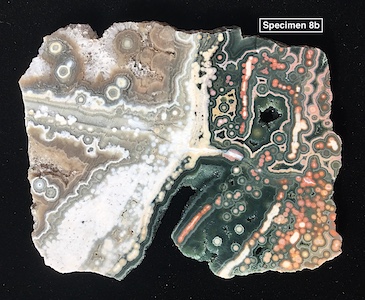
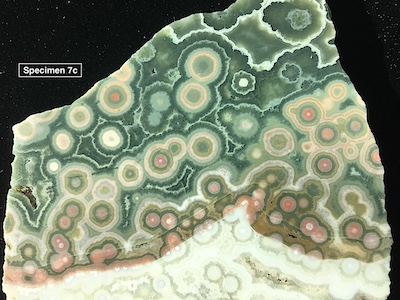
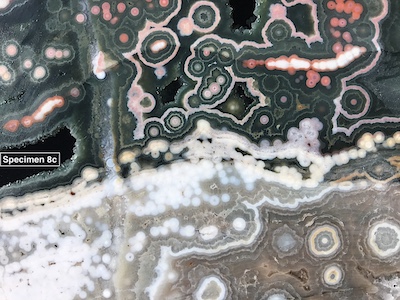
They had a house of spherulitic chalcedony on the planet Earth by the edge of a fully alive sea...
In a previous post on this page I explained crystal and color zoning in Ocean Jasper. In this post I specifically address the source of color and pronounced color zoning observed in many old stock specimens. Predominantly the source of color is iron oxide/hydroxide particulates that precipitate out of solution into the gel-sol formations of the matrix and intertwined matrix/spherulite growth. Precipitates are formed dynamically through nonequilibrium reaction-diffusion processes, concurrent with gel-sol formation with increasing viscosity plus spherulite growth from nucleation, all dependent on fluctuations in local density, which in turn depends on fluctuations in temperature, pressure, chemical concentration of the precipitating solution, among other physical and chemical variables. It is not possible to view these processes as "static", as the sources of the complex patterns (including color) in Ocean Jasper are from "dynamic" processes. The colors we perceive are an overall result of a distributed mix of particulates with the gel-sol background, and the latter itself can have a color dependent on chemical concentration of finer particulates. The best way to see such fine scale (nm to micron) features is via high resolution imaging. The larger particulates are visible to the human eye. The curved lines demarcating color zones in Specimens 7 and 8 shown above are representative of dynamic processes (reaction-diffusion) in a complex fluid with solution chemistry (precipitation) and polymeric chemistry (gelation). It has been suggested alternatively that the stark white zone of say Specimen 7 is due to a "washing away" of particulates by some post formation weathering process. The zoning in Specimen 8 and the wisps of white zones in Specimen 3 (See HERE) negate this idea. "Washing away" implies an invasive process that would damage the structural characteristics of the evidently remaining spherulitic banding, not just the removal of particulates, and statistically some particulates would remain from such a process, and this is not evident. An alternative possibility that I'd like to suggest is chemical "bleaching" of the spherulitic chalcedony from a post-hardening bleaching solution that permeates the porous chalcedony. This is a much more likely scenario, but it is not clear what the chemical composition of such a bleaching solution is that would completely neutralize all of the color from the original precipitates, nor is it clear what the source of such a bleaching solution is. Clearly specimens 1, 2 and 8 aren't likely the result of post formation bleaching processes. The color and crystal zoning in all Ocean Jasper specimens shown here is consistently a result of the nonequilibrium processes in the original formation from a complex fluid as described above. Any degree of weathering processes post-original formation are clearly minimally non-invasive.
